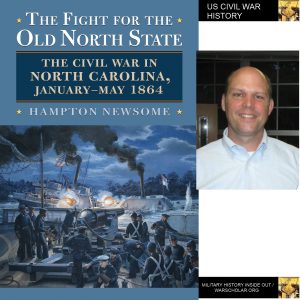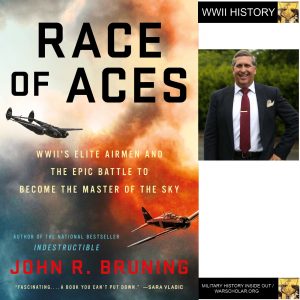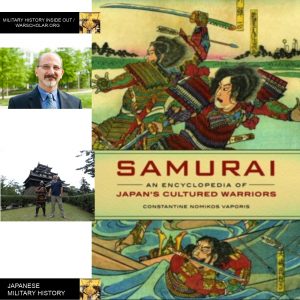 Check out the book here
Check out the book here
https://kansaspress.ku.edu/978-0-7006-2746-2.html
Brother against brother is the mantra most often heard when discussing the United States Civil War. But how often do readers consider what this means? Some of the citizens of Northern states enlisted in the Confederate Army and vice versa. In the eyes of the people of their states, these soldiers were traitors and often treated as such. That is one of the issues addressed by Hampton Newsome in his book on North Carolina during the Civil War.
As opposing armies clashed against each other in the state, so did civilians clash against each other as well as the war dragged on. African-Americans sought freedom and the chance to fight against former oppressors. North Carolina wanted peace and considered negotiating peace separately from the other Southern states. The war as a whole was much more than tactics and military operations and Hampton Newsome weaves these parts together in an engaging and enlightening read. In fact the book was named Book of the Year for 2019 by Civil War Books and Authors. https://cwba.blogspot.com/2019/12/2019-civil-war-books-and-authors-year.html
Hampton Newsome has been researching and writing on the Civil War for many years and we discussed this latest book The Fight for the Old North State: The Civil War in North Carolina, January-May 1864. There are still many stories to be told about the Civil War and Mr. Newsome has written about some very important ones.
How did you become interested in studying and writing on the subject of your book?
While I was searching for a new project several years ago, a fellow author suggested I look into Confederate efforts to capture key Union positions in North Carolina during 1864. As I read up on these events and gathered materials, I realized these battles formed a compelling story that involved not only fighting on land and water but other issues such as local resistance to the Confederacy, emancipation, desertion, and a crucial gubernatorial election.
What aspect of this subject does your book focus on?
Specifically, the book recounts the Confederate operations against New Bern, raids conducted by both sides, combat between ironclads and wooden gunboats, and the rebel victory at the battle of Plymouth. Although it is primarily a military study, the book also delves into the connections between these engagements and the political and social developments at the time.
What are the major themes of this book?
In addition to the operational and tactical details of this campaign, the book explores the motivations behind the Confederate offensive. Specifically, in attacking Union positions, rebel leaders sought to secure vital supplies from North Carolina for Robert E. Lee’s army and to dampen a growing peace movement that threatened to pull the state out of the war. The resulting engagements involved complex joint army and navy operations, daring raids, and deadly ironclads.
What resource materials did you use for your research?
I relied on a wide array of sources for this project. As with most Civil War military studies, the research began with the Official Records (“O.R.”), a collection of more than 100 bound volumes of reports and correspondence compiled and published by the War and Navy Departments a few decades after the conflict. This essential source, however, formed only the tip of the research iceberg. In searching for records beyond the O.R., I dug into the unpublished departmental, army, and personnel records at the National Archives. I also gathered diaries, letters, and other material housed at university and historical society collections around the country. I am grateful for the tremendous help from many excellent archivists at these various institutions.
I also made extensive use of period newspapers, especially those published in North Carolina. These have been a gold mine for me in this and other projects. They often contain eyewitness accounts in the form of letters sent home by soldiers on the battlefields and in the camps. These soldier dispatches, full of details not found elsewhere, provide a valuable source of information that augments official reports and correspondence. In addition, the papers routinely include colorful, unflinchingly-partisan editorials, which furnish a clear window into how different factions viewed the events of the day. Despite their immense value, I approach the newspapers with caution and weigh the reliability of each story. For instance, the lead “news” articles are often vague and inaccurate, frequently the product of murky, third-hand rumors trickling across editors’ desks.
What part of the research process was most enjoyable for you?
I enjoy the “eureka” moments. There have been many of those, both big and small. For example, in gathering research for my book on the Petersburg Campaign a few years ago, I found a lengthy court martial transcript at the National Archives, which, according to the file log, had only been viewed once before. It was stuffed with testimony from high-ranking Federal officers, and included a detailed, hand-drawn battlefield map. In my research on The Fight for the Old North State, I came upon the full transcript of an investigation into the looting, vandalism, and arson that destroyed a large part of Washington, N.C. in late April 1864. The report contained the accounts of Union commanders (both army and navy) as well as the testimony of citizens who witnessed the events that left much of that town in ashes. As far as I could tell, no author had previously used that document.
Was there anything that you wrote about during the project that moved you?
The 1864 events in North Carolina produced much tragedy and loss. The study discusses the sometimes shifting loyalties as well as the trials of the state’s population, including the challenges faced by African-Americans seeking to gain their freedom and serve the Union war effort. Throughout the eastern part of the state, many slaves fled from their owners and joined the Union army as new recruits. After the Battle of Plymouth, the Confederates captured and then killed a number of these men, an act repeated on battlefields elsewhere, including the Crater and Fort Pillow. In addition, the book recounts the execution by Confederate officials of nearly two dozen white North Carolinians who had enlisted in Union regiments. These unfortunate men had served in Confederate units early in the war, switched sides, and then had become prisoners of the rebels during the fighting at New Bern. I was struck by how these episodes brought into relief the brutal, tangled nature of the war in the region.
What was the most difficult issue to research?
The search for elusive information about Confederate supply efforts in North Carolina was particularly difficult. Most of the official Confederate commissary records from 1864 have not survived. However, I was able to find important information elsewhere in period newspapers and in correspondence. I also struggled to locate information about Union African-American recruits at Plymouth. In trying to track down several details, I pored over regimental books and personnel files housed at the National Archives as well as records in the collections at Duke University. Ultimately, I managed to put many of the pieces together but, as is usually the case, there is certainly still more to find.
What do you hope the book will do for readers?
Foremost, I hope the book provides readers with an engaging narrative of interesting, yet little-known events during the war. Additionally, I’d like them to come away with an appreciation of how complicated things were in North Carolina at the time, both socially and politically. In addition to the military details, the book highlights many issues impacting the state during the conflict including unionist sentiment, internal divisions, the contributions of African-Americans to the Union war effort, the enlistment of North Carolinians into Federal regiments, and the peace movement.
Did you have any difficulties in finishing the book and publishing it and if so, how did you overcome those?
Though this book took several years to complete, I was fortunate to avoid any extraordinary problems along the way. I enjoy juggling the research, writing, and editing involved in the process of assembling a book. I also make the maps. But there is no way I could have completed this project on my own. I’m thankful to many who helped out by assisting with research, offering suggestions, and reading drafts. Among the many readers was my father, who grew up in Ahoskie, North Carolina, not far from where many of the book’s events occurred. In addition, I’ve been lucky to work with fantastic academic presses and University Press of Kansas has been no exception. The editors, copy editors, designers, and marketing staff at Kansas have been great to work with and have produced a wonderful looking book in my opinion.
Do you have any online accounts where people can find more of your work?
I have a blog, Ransack Garret and Closet, at www.hamptonnewsome.blogspot.com. I am also on Twitter @hamptonnewsome.
Author Biography
Hampton Newsome
Author of Richmond Must Fall: The Richmond-Petersburg Campaign, October 1864 (Kent State Univ. Press, 2013) and co-editor (with John Horn and John Selby) of Civil War Talks: Further Reminiscences of George S. Bernard and His Fellow Veterans (Univ. of Virginia Press, 2012).
Project/work being discussed: The Fight for the Old North State: The Civil War in North Carolina, January-May 1864, (Modern War Studies) (Univ. Press of Kansas, 2019).
Check out the book here
https://kansaspress.ku.edu/978-0-7006-2746-2.html
As an Amazon Associate I earn from qualifying purchases.


 Samurai military history book – “Samurai” (ABC-CLIO Press, 2019) – Constantine Vaporis interview
Samurai military history book – “Samurai” (ABC-CLIO Press, 2019) – Constantine Vaporis interview
 Check out the book here
Check out the book here